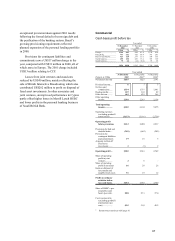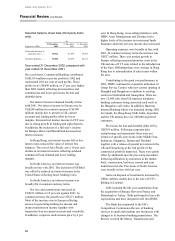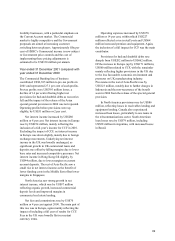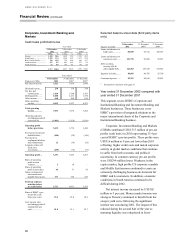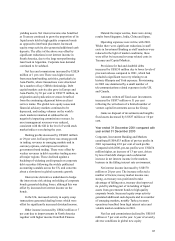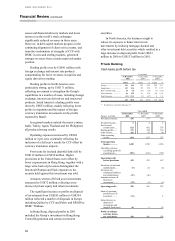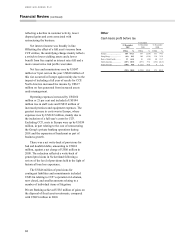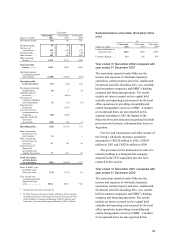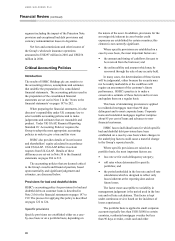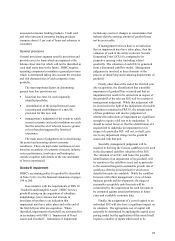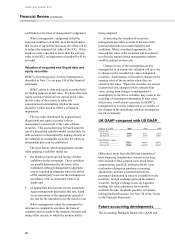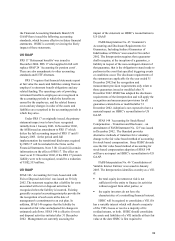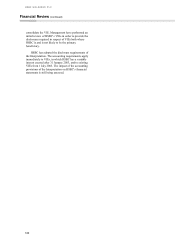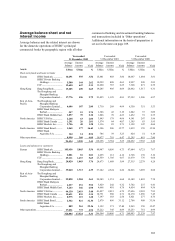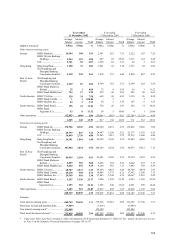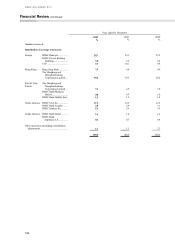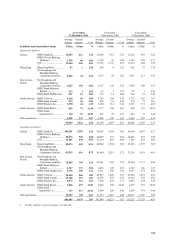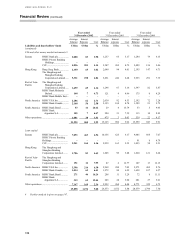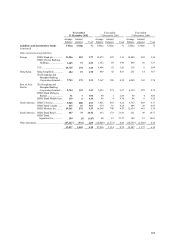HSBC 2002 Annual Report Download - page 99
Download and view the complete annual report
Please find page 99 of the 2002 HSBC annual report below. You can navigate through the pages in the report by either clicking on the pages listed below, or by using the keyword search tool below to find specific information within the annual report.97
unsecured consumer lending products. Credit card
and other unsecured consumer lending products
comprise about 15 per cent of loans and advances to
customers.
General provisions
General provisions augment specific provisions and
provide cover for loans which are impaired at the
balance sheet date but which will not be identified as
such until some time in the future. HSBC requires
operating companies to maintain a general provision
which is determined taking into account the structure
and risk characteristics of each company’s loan
portfolio.
The most important factors in determining
general loan loss provisions are:
• historical loss rates for each separately
identified portfolio;
• determination of the period between losses
occurring and establishment of a specific
provision for this loss; and
• management’s judgement of the extent to which
current economic and credit conditions are such
that the actual level of inherent losses is greater
or less than that suggested by historical
experience .
The main areas of judgement are in determining
the period and assessing current economic
conditions. These are kept under continuous review
based on an analysis of economic forecasts, industry
sector performance, insolvency and bankruptcy
statistics together with details of the rate and nature
of losses experienced.
Goodwill impairment
HSBC’s accounting policy for goodwill is described
in Note 2 (d) (v) to the financial statements on pages
199 to 200.
In accordance with the requirements of FRS 10
‘Goodwill and Intangible Assets’ , HSBC reviews
goodwill arising on the acquisition of subsidiary
undertakings, joint ventures and interests in
associates when there is an indication that
impairment may have taken place and at the end of
the first full year after an acquisition. Where
identified, impairments of goodwill are accounted for
in accordance with FRS 11 ‘Impairment of Fixed
Assets and Goodwill’ . Indications of impairment
include any events or changes in circumstance that
indicate that the carrying amount of goodwill may
not be recoverable.
If management believes there is an indication
that an impairment may have taken place, then the
valuation of each of the entity’ s relevant ‘Income
Generating Units’ (IGUs) is compared to its
respective carrying value (including related
goodwill). The valuation of each IGU is generated
from a discounted cashflow model. Management
judgement is involved in three elements of the
process of identifying and evaluating impairments of
goodwill.
Firstly, other than at the end of the first full year
after acquisition, the identification that a possible
impairment of goodwill has occurred and that an
impairment test needs to be carried out in respect of
the goodwill of the relevant IGU will be a matter of
management judgement. While this judgement will
be exercised in the light of the indications of possible
impairment contained in FRS 10, the interpretation
of these guidelines will involve judgement of
whether the indications of impairment are significant
enough to require a full test to be undertaken. It
should be noted, however, that the identification of a
requirement to undertake an impairment test in
respect of a particular IGU will not, in itself, give
rise to any impairment charge for the goodwill
associated with that unit.
Secondly, management judgement will be
required in deriving the forecast cashflows to be used
in the discounted cashflow valuation of the IGU.
The valuation of an IGU, and hence the possible
identification of an impairment of its goodwill, will
be sensitive to the cashflows used, and in particular
to the assumed long-term sustainable growth rate of
cashflows after the initial period for which more
detailed forecasts are available. While the cashflow
forecasts will reflect management’ s view of future
business growth and developments, the range of
reasonably-acceptable cash forecasts will be
constrained by the requirement for such forecasts to
be compared against actual performance in future
years and verifiable economic data.
Finally, the assignment of a cost of capital to an
individual IGU will also have a significant impact on
its valuation. The appropriate cost of capital will
generally be determined by applying the capital asset
pricing model but the application of this model itself
requires a number of inputs which need to be


